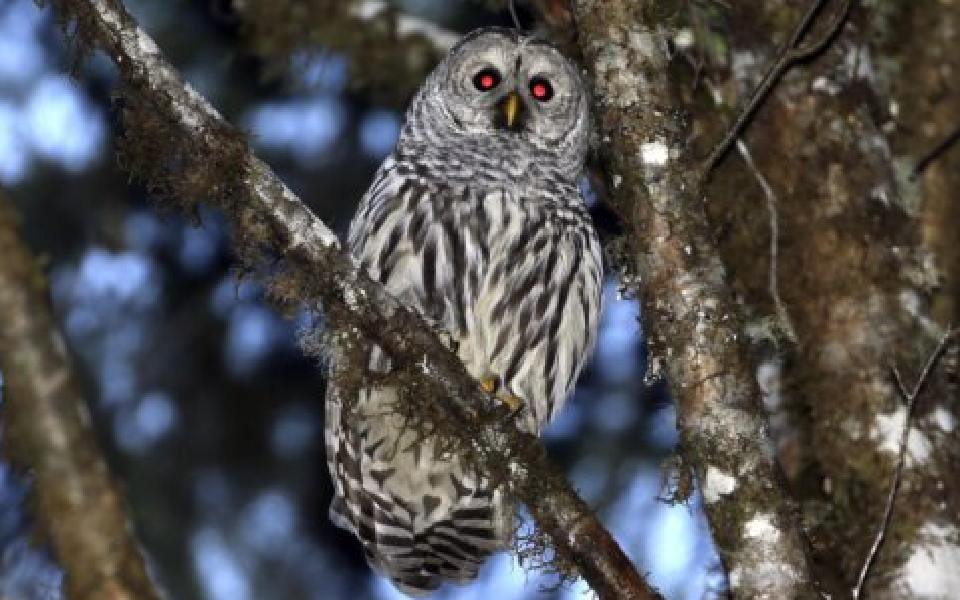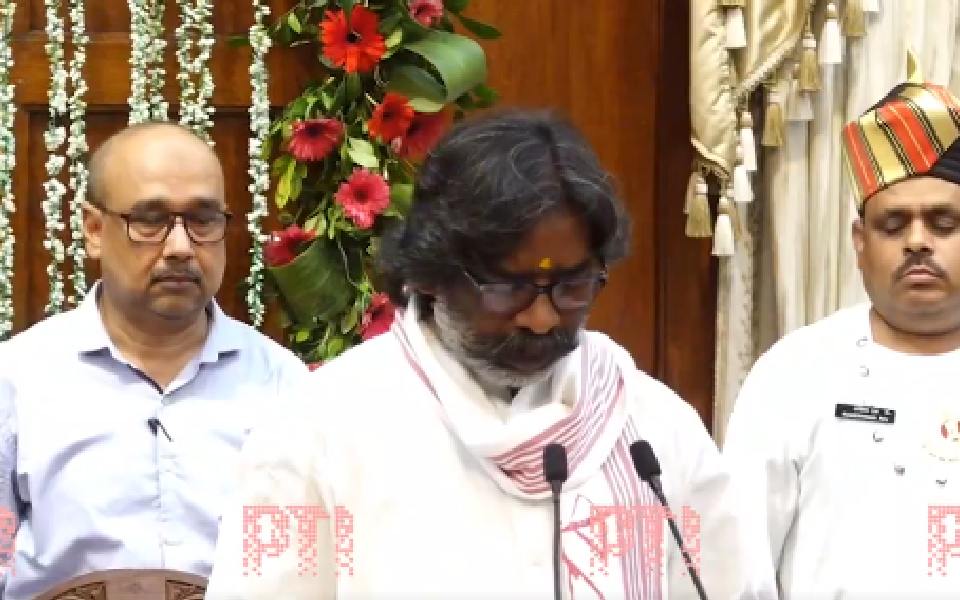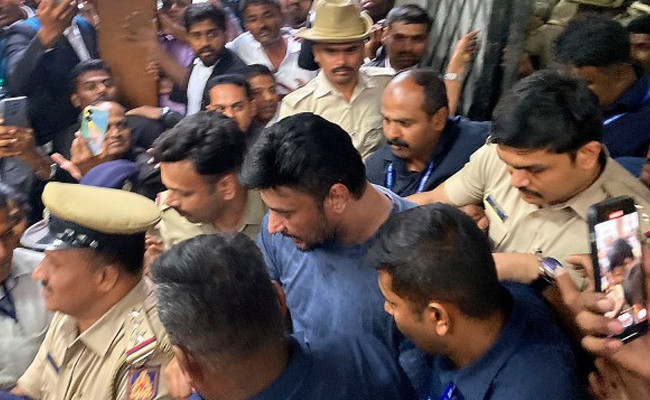New Delhi (PTI): DMK Rajya Sabha member P Wilson on Tuesday urged the central government to either abolish medical entrance exam NEET or approve Tamil Nadu's NEET exemption Bill to exclude the state from the competitive exam.
His appeal in the Upper House of Parliament came amid a row over alleged irregularities in the conduct of the National Eligibility-cum-Entrance Test (NEET) for admissions to medical courses.
During the debate on the Motion of Thanks to the President's address in the Rajya Sabha, he said the state legislative assembly had passed the Tamil Nadu Admission to Medical Courses Bill in 2021 and subsequently passed a resolution unanimously against the exam and to address the "NEET menace".
However, the Bill has been pending the "Centre's assent for nearly three years", causing "anxiety" among students and parents, he said.
"We seek the PM's immediate attention to either approve the Bill passed by the state government or bring out amendments to the National Medical Commission Act to abolish the NEET and next exam system at the national level," Wilson stated.
The NEET-UG 2024 exam was taken by around 23.33 lakh students and the alleged irregularities in its conduct, including question paper leak, has led to filing of cases in courts, including the Supreme Court, and an inquiry by the Central Bureau of Investigation (CBI).
The probe agency on June 23 filed an FIR in connection with the alleged irregularities in the exam held on May 5 on a reference from the Union education ministry.
The DMK leader also criticised the delay in ordering of the CBI probe, claiming this might have allowed "fraudsters" to tamper with documents and erase evidence.
Wilson also raised concerns about the handling of competitive exams, including the NEET, by the National Testing Agency (NTA).
The agency that handles crucial national-level tests is registered under the Societies Registration Act "like any other flat owner or housing society", the DMK leader said.
"From 2014 to 2024, the government has passed 427 Bills in the Lok Sabha and 365 bills in the Rajya Sabha. However, the Union government was not interested in introducing a legislation to provide statutory backing to the NTA," Wilson said and claimed that this lack of a legislation could potentially "shield the agency from accountability".
The DMK has long opposed NEET, having secured a stay from the Madras High Court on its implementation when it was first introduced in 2010 through regulations.
In a letter addressed to Prime Minister Narendra Modi regarding exemption of NEET for the state, Tamil Nadu Chief Minister and DMK supremo M K Stalin on Friday said that "... we had passed a Bill unanimously in our legislative assembly to exempt Tamil Nadu from NEET and to provide medical admissions based on 12th standard marks."
"This has been sent for Presidential assent but the assent is still pending," he had said and added that the irregularities during the recent NEET exam validated the state's opposition to the exam.
Let the Truth be known. If you read VB and like VB, please be a VB Supporter and Help us deliver the Truth to one and all.
To save the imperiled spotted owl from potential extinction, US wildlife officials are embracing a contentious plan to deploy trained shooters into dense West Coast forests to kill almost a half-million barred owls that are crowding out their cousins.
The US Fish and Wildlife Service strategy released Wednesday is meant to prop up declining spotted owl populations in Oregon, Washington state and California. The Associated Press obtained details in advance.
Documents released by the agency show up to about 450,000 barred owls would be shot over three decades after the birds from the eastern US encroached into the West Coast territory of two owls: northern spotted owls and California spotted owls. The smaller spotted owls have been unable to compete with the invaders, which have large broods and need less room to survive than spotted owls.
Past efforts to save spotted owls focused on protecting the forests where they live, sparking bitter fights over logging but also helping slow the birds’ decline. The proliferation of barred owls in recent years is undermining that earlier work, officials said.
“Without actively managing barred owls, northern spotted owls will likely go extinct in all or the majority of their range, despite decades of collaborative conservation efforts,” said Kessina Lee, the Oregon state supervisor for the US Fish and Wildlife Service.
The notion of killing one bird species to save another has divided wildlife advocates and conservationists. It’s reminiscent of past government efforts to save West Coast salmon by killing sea lions and cormorants that prey on the fish, and to preserve warblers by killing cowbirds that lay eggs in warbler nests.
Some advocates grudgingly accepted the barred owl removal strategy; others said it’s reckless diversion from needed forest preservation.
“The Fish and Wildlife Service is turning from protector of wildlife to persecutor of wildlife,” said Wayne Pacelle, founder of the advocacy group Animal Wellness Action. He predicted the program would fail because the agency won’t be able to keep more barred owls from migrating into areas where others have been killed.
The shootings would likely begin next spring, officials said. Barred owls would be lured using megaphones to broadcast recorded owl calls, then shot with shotguns. Carcasses would be buried on site.
The birds already are being killed by researchers in some spotted owl habitats, with about 4,500 removed since 2009, said Robin Bown, barred owl strategy leader for the Fish and Wildlife Service. Those targeted included barred owls in California’s Sierra Nevada region, where the animals have only recently arrived and officials want to stop populations from taking hold.
In other areas where barred owls are more established, officials aim to reduce their numbers but acknowledge shooting owls is unlikely to eliminate them.
Supporters include the American Bird Conservancy and other conservation groups.
Barred owls don’t belong in the West, said American Bird Conservancy Vice President Steve Holmer. Killing them is unfortunate, he added, but reducing their numbers could allow them to live alongside spotted owls over the long term.
“As the old forests are allowed to regrow, hopefully coexistence is possible and maybe we don’t need to do as much” shooting, Holmer said.
The killings would reduce nationwide barred owl numbers by less than 1%, officials said. That compares with potential extinction for spotted owls should the problem go unaddressed.
Public hunting of barred owls wouldn’t be allowed. The wildlife service would designate government agencies, landowners, American Indian tribes or companies to carry out the killings. Shooters would have to provide documentation of training or experience in owl identification and firearm skills.
The publishing in the coming days of a final environmental study on the proposal will open a 30-day comment period before a final decision is made.
The barred owl plan follows decades of conflict between conservationists and timber companies, which cut down vast areas of older forests where spotted owls reside.
Early efforts to save the birds culminated in logging bans in the 1990s that roiled the timber industry and its political supporters in Congress.
Yet spotted owl populations continued declining after barred owls started showing up on the West Coast several decades ago. Across study sites in the region, at least half of spotted owls have been lost, with losses topping 75% in some areas, said Katherine Fitzgerald, who leads the wildlife service’s northern spotted owl recovery program.
Opponents say the mass killing of barred owls would cause severe disruption to forest ecosystems and could lead to other species — including spotted owls — being mistakenly shot. They’ve also challenged the notion that barred owls don’t belong on the West Coast, characterizing their expanding range as a natural ecological phenomenon.
Researchers say barred owls moved westward by one of two routes: across the Great Plains, where trees planted by settlers gave them a foothold in new areas; or via Canada’s boreal forests, which have become more hospitable as temperatures rise because of climate change.
Northern spotted owls are federally protected as a threatened species. Federal officials determined in 2020 that their continued decline merited an upgrade to the more critical designation of “endangered.” But the Fish and Wildlife Service refused to do so at the time, saying other species took priority.
California spotted owls were proposed for federal protections last year. A decision is pending.
Under former President Donald Trump, government officials stripped habitat protections for spotted owls at the behest of the timber industry. Those were reinstated under President Joe Biden after the Interior Department said political appointees under Trump relied on faulty science to justify their weakening of protections.





